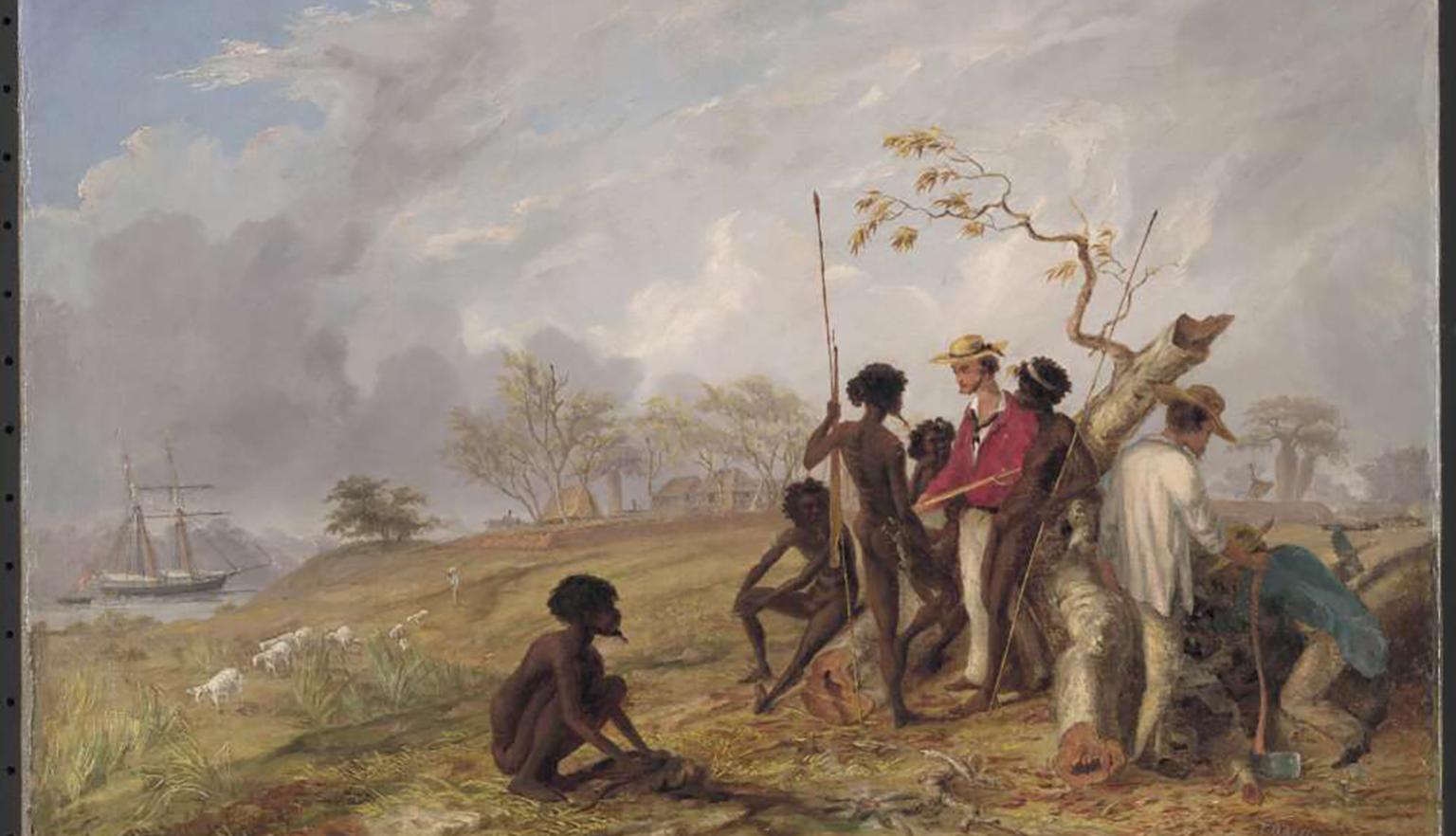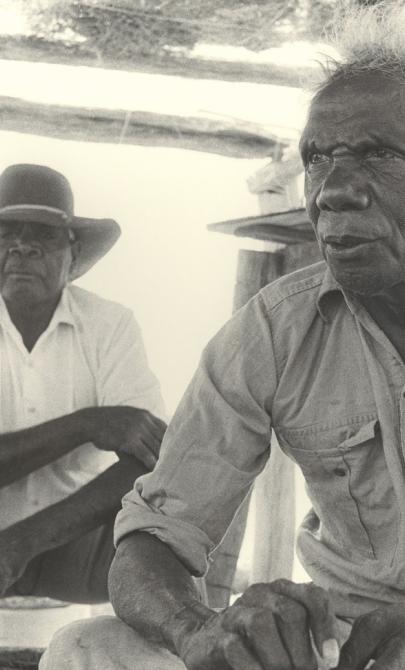Early interaction
A window into early settlement
Begin by sharing Thomas Baines’ painting with your students. This artwork offers a rich scene that captures the essence of early European settlement in Australia.
Activity 1: Analyse the painting
Step 1: Observe the details
Ask your students to closely observe the painting and use the following questions to guide their exploration:
- What people can you see? What are they doing?
- What animals can you see?
- What buildings can you see?
- When and where do you think this picture was painted?
- What does the painting tell you about European settlement of Australia?
Encourage your students to identify specific details in the painting, such as:
- Tools used by the people: What are they working with?
- The ship: How does its presence influence the scene?
- Trees: Note the fallen tree, the boab tree, and other trees in the background.
- Animals: Discuss the significance of the sheep and emu in the painting.
A picture paints 1000 words
In this activity, students step into the role of a person or object in a painting, exploring what it might see, know, or care about. Using the 'Step Inside' thinking routine, students develop empathy and a deeper understanding of different perspectives.
Activity 2: Perspective taking
Invite each student to choose a person or object depicted in the painting. Get them to respond to these three questions:
- What can the person or object see?
- What might the person or object know about or believe?
- What might the person or object care about?
Students can share their responses orally or in written form with a partner, in small groups, or as a class. This activity encourages empathy and deepens their understanding of the perspectives represented in the painting.
Step into the scene
In this activity, students come together to discuss what might have helped or hindered communication and teamwork among the people in the painting. They’ll consider factors like cultural differences, shared goals, and environmental challenges, building on insights from the previous activity and their own experiences.
Activity 3: Discuss communication and collaboration
Bring the class together to discuss the following questions, drawing on insights from the earlier activity and their own experiences:
- What might have encouraged the people in the painting to communicate and work together?
- What might have worked against these people communicating and working together?
Prompt students to consider factors such as cultural differences, shared goals, or environmental challenges that could influence the dynamics of communication and cooperation among the people depicted.




